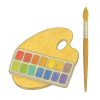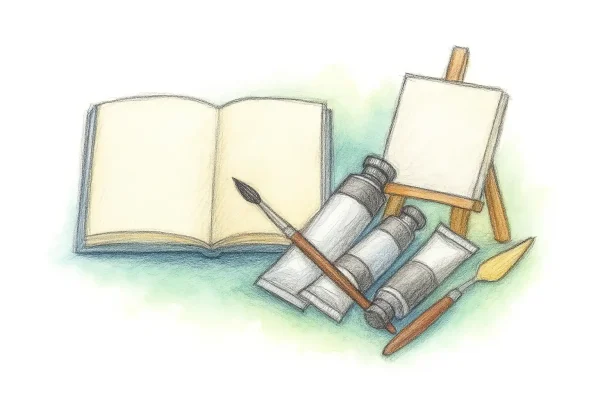Beginner’s FAQ: Oil Painting with Clara Wren
1. Do I need solvent to paint with oils?
Not necessarily. Solvents like odourless mineral spirits help thin paint and clean brushes, but you can also use water-mixable oils for a safer, solvent-free setup.
2. How long do oil paintings take to dry?
Touch-dry in 2–5 days, depending on thickness and pigment. Full curing takes several months.
3. Can I paint over a wet layer?
Yes — oil paints blend beautifully when wet. Just remember the “fat over lean” rule if layering.
4. What’s the best surface for beginners?
Pre-primed canvas boards are perfect. They’re affordable, portable, and ready to paint on straight out of the pack.
5. Do I need to varnish my painting?
Varnish protects the surface and deepens colours. Wait at least 6 months before applying a final varnish like Gamvar Gloss or Satin.
6. Can I mix oil paint with acrylic?
You can paint oil over acrylic, but never acrylic over oil. Acrylic dries fast and forms a stable base layer.
7. How do I clean my brushes safely?
Wipe excess paint, then wash with The Masters Brush Cleaner and warm water. Avoid harsh chemicals.
8. Is oil painting suitable for beginners?
Absolutely. Its slow drying time allows for easy corrections and rich blending. Start small, use quality materials, and enjoy the process.

